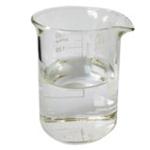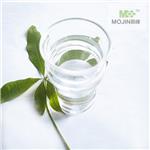- Diacetone Alcohol
-

- $10.50 / 1KG
-
2024-09-19
- CAS:123-42-2
- Min. Order: 1KG
- Purity: 99%
- Supply Ability: 10 ton
- Diacetone Alcohol
-

- $30.00 / 1kg
-
2024-08-15
- CAS:123-42-2
- Min. Order: 1kg
- Purity: 99%
- Supply Ability: 20 tons
- Diacetone Alcohol
-

- $0.00 / 25KG
-
2023-09-26
- CAS:123-42-2
- Min. Order: 1KG
- Purity: 99%
- Supply Ability: 50000KG/month
|
| | Diacetone Alcohol Chemical Properties |
| Melting point | -42.8 °C | | Boiling point | 166 °C(lit.) | | density | 0.938 g/mL at 20 °C | | vapor density | 4 (vs air) | | vapor pressure | <1 mm Hg ( 20 °C) | | refractive index | n20/D 1.423(lit.) | | Fp | 132 °F | | storage temp. | Store below +30°C. | | solubility | Soluble in alcohol, ether (Weast, 1986), and many other solvents, particular ketones such as
acetone and 2-butanone. | | pka | 14.57±0.29(Predicted) | | form | Liquid | | color | Clear colorless | | Odor | Mild, pleasant. | | explosive limit | 1.8-6.9%(V) | | Water Solubility | MISCIBLE | | λmax | 249nm(lit.) | | Merck | 14,2964 | | BRN | 1740440 | | Specific Activity | 25-50 mCi/mmol | | Solvent | Ethanol | | Concentration | 0.1 mCi/ml | | Exposure limits | TLV-TWA 240 mg/m3 (50 ppm) (ACGIH);
IDLH 2100 ppm (NIOSH). | | Dielectric constant | 18.2(Ambient) | | Stability: | Stable. Flammable. Incompatible with strong oxidizing agents, amines, ammonia, strong acids, strong bases, alkalies, aluminium. | | LogP | -0.09 at 20℃ | | CAS DataBase Reference | 123-42-2(CAS DataBase Reference) | | NIST Chemistry Reference | 4-Hydroxy-4-methylpentan-2-one(123-42-2) | | EPA Substance Registry System | 4-Hydroxy-4-methyl-2-pentanone (123-42-2) |
| Hazard Codes | Xi | | Risk Statements | 36-R36 | | Safety Statements | 24/25-S24/25 | | RIDADR | UN 1148 3/PG 3 | | OEB | A | | OEL | TWA: 50 ppm (240 mg/m3) | | WGK Germany | 1 | | RTECS | SA9100000 | | F | 9 | | Autoignition Temperature | 640 °C | | TSCA | Yes | | HS Code | 2914 40 10 | | HazardClass | 3 | | PackingGroup | III | | Hazardous Substances Data | 123-42-2(Hazardous Substances Data) | | Toxicity | LD50 orally in rats: 4.0 g/kg (Smyth) | | IDLA | 1,800 ppm [10% LEL] |
| | Diacetone Alcohol Usage And Synthesis |
| Application | Diacetone alcohol is available in two grades: a commercial grade containing 15% acetone and an acetone-free grade. Both solvent grades of diacetone alcohol may acquire a yellow color on aging; both are good solvents for nitrocellulose, cellulose esters, and several other types of resins. The much slower evaporating diacetone alcohol is similar to acetone in its solvency. It is used in brushing-type cellulose ester lacquers to produce hard and brilliant gloss films. Diacetone alcohol is also used as lacquer thinner and in coating compositions for paper and textiles. Mesityl oxide, the unsaturated medium boiling point ketone that is prepared by the dehydration of diacetone alcohol, will darken and form a solid residue on aging.
| | Description | Diacetone alcohol is a colorless liquid with amild, minty odor. Odor threshold = 0.28 ppm. Molecularweight = 116.16; Specific gravity (H2O:1) = 0.94; Boilingpoint = 168℃; Freezing/Melting point = - 43.8℃; Vaporpressure = 1 mmHg at 20℃; Flash point = 64℃; 58℃(acetone free); 64℃ (commercial grade). Explosive limits:LEL = 1.8%; UEL = 6.9%. Hazard Identification (based onNFPA-704 M Rating System): Health 1, Flammability 2,Reactivity 0. Soluble in water. | | Chemical Properties | colourless liquid | | Chemical Properties | Diacetone alcohol is a colorless liquid. Mild,
mint odor. | | Physical properties | Clear, watery, flammable liquid with a mild, pleasant, characteristic odor similar to 2-butanone or
the pentanones. Experimentally determined detection and recognition odor threshold concentrations
were 1.3 mg/m3 (270 ppbv) and 5.2 mg/m3 (1.1 ppmv), respectively (Hellman and Small,
1974). | | Uses | Solvent for pigments, cellulose, resins,
oils, fats, and hydrocarbons; hydraulic brake
fluid; antifreeze | | Uses | 4-Hydroxy-4-methyl-2-pentanone is used asa solvent for nitrocellulose, cellulose acetate,resins, fats, oils, and waxes; and in hydraulicfluids and antifreeze solutions.. | | Uses | Solvent for cellulose acetate, nitrocellulose, celluloid, fats, oils, waxes, resins. As a preservative in pharmaceutical preparations. In some antifreeze solutions and in hydraulic fluids. | | Definition | ChEBI: A beta-hydroxy ketone formed by hydroxylation of 4-methylpentan-2-one at the 4-position. It has been isolated from Achnatherum robustum. | | Production Methods | 4-Hydroxy-4-methyl-2-pentanone is manufactured through
the action of barium hydroxide, potassium hydroxide, or calcium
hydroxide on acetone. Commercial materials may contain
up to 15%acetone. | | Synthesis Reference(s) | Organic Syntheses, Coll. Vol. 1, p. 199, 1941
Tetrahedron Letters, 16, p. 4027, 1975 DOI: 10.1016/S0040-4039(00)91227-9 | | General Description | A clear colorless liquid with a pleasant odor. Flash point below 141°F. Less dense than water. Vapors heavier than air. | | Air & Water Reactions | Highly flammable. Soluble in water. | | Reactivity Profile | Acetyl bromide reacts violently with alcohols or water, [Merck 11th ed., 1989]. Mixtures of alcohols with concentrated sulfuric acid and strong hydrogen peroxide can cause explosions. Example: An explosion will occur if dimethylbenzylcarbinol is added to 90% hydrogen peroxide then acidified with concentrated sulfuric acid. Mixtures of ethyl alcohol with concentrated hydrogen peroxide form powerful explosives. Mixtures of hydrogen peroxide and 1-phenyl-2-methyl propyl alcohol tend to explode if acidified with 70% sulfuric acid, [Chem. Eng. News 45(43):73(1967); J, Org. Chem. 28:1893(1963)]. Alkyl hypochlorites are violently explosive. They are readily obtained by reacting hypochlorous acid and alcohols either in aqueous solution or mixed aqueous-carbon tetrachloride solutions. Chlorine plus alcohols would similarly yield alkyl hypochlorites. They decompose in the cold and explode on exposure to sunlight or heat. Tertiary hypochlorites are less unstable than secondary or primary hypochlorites, [NFPA 491 M, 1991]. Base-catalysed reactions of isocyanates with alcohols should be carried out in inert solvents. Such reactions in the absence of solvents often occur with explosive violence, [Wischmeyer(1969)]. | | Health Hazard | Vapor is irritating to the mucous membrane of the eye and respiratory tract. Inhalation can cause dizziness, nausea, some anesthesia. Very high concentrations have a narcotic effect. The liquid is not highly irritating to the skin but can cause dermatitis. | | Health Hazard | 4-Hydroxy-4-methyl-2-pentanone is a mildirritant and a strong narcotic. It can causeirritation in the eyes, nose, throat, and skin.The effect on humans, however, is mild at100 ppm concentration.
Animal experiments indicated that it couldproduce sleep after a period of restlessnessand excitement. The symptoms of its toxic�ity are a marked decrease in breathing andblood pressure, and relaxation of the mus�cles. Ingestion of this compound in highdoses can damage corneal tissue and liver.The oral toxicity in rats was very low, witha LD50 value of 4000 mg/kg.. | | Fire Hazard | HIGHLY FLAMMABLE: Will be easily ignited by heat, sparks or flames. Vapors may form explosive mixtures with air. Vapors may travel to source of ignition and flash back. Most vapors are heavier than air. They will spread along ground and collect in low or confined areas (sewers, basements, tanks). Vapor explosion hazard indoors, outdoors or in sewers. Runoff to sewer may create fire or explosion hazard. Containers may explode when heated. Many liquids are lighter than water. | | Chemical Reactivity | Reactivity with Water : No reaction; Reactivity with Common Materials: No reaction; Stability During Transport: Stable; Neutralizing Agents for Acids and Caustics: Not pertinent; Polymerization: Not pertinent; Inhibitor of Polymerization: Not pertinent. | | Safety Profile | Moderately toxic by
ingestion and intraperitoneal routes. Mddly
toxic by skin contact. Human systemic
effects by inhalation: headache, nausea or
vomiting, eye and pulmonary changes. A
skin, mucous membrane, and severe eye
irritant. Can cause anemia and damage to
liver and hdneys. Narcotic in high
concentration. Flammable liquid when
exposed to heat or flame; can react with
oxidzing materials. Explosive in the form of
vapor when exposed to heat or flame. To
fight fire, use alcohol foam, foam, CO2, dry
chemical. When heated to decomposition it emits acrid smoke and irritating fumes. See
also KETONES. | | Potential Exposure | It is used as a solvent for pigments,
cellulose esters; oils and fats. It is used in hydraulic brake
fluids and in antifreeze formulations. | | First aid | If this chemical gets into the eyes, remove anycontact lenses at once and irrigate immediately for at least15 min, occasionally lifting upper and lower lids. Seek medical attention immediately. If this chemical contacts theskin, remove contaminated clothing and wash immediatelywith soap and water. Seek medical attention immediately. Ifthis chemical has been inhaled, remove from exposure,begin rescue breathing (using universal precautions, including resuscitation mask) if breathing has stopped and CPR ifheart action has stopped. Transfer promptly to a medicalfacility. When this chemical has been swallowed, get medical attention. Give large quantities of water and inducevomiting. Do not make an unconscious person vomit. | | Carcinogenicity | Occupational exposure to 4-hydroxy-4-methyl-2-
pentanone is most likely to be by inhalation and skin contact.
It presents a low degree of hazard if good work practices are
observed. Appropriate protective clothing and eye protection
should be made available as prolonged exposure may defat the skin and cause dermatitis. The occurrence of eye, nose,
and throat irritation and a recognizable odor at low concentrations
should protect against overexposure to 4-hydroxy-4-
methyl-2-pentanone. | | Environmental fate | Biological. Using the BOD technique to measure biodegradation, the mean 5-d BOD value (mM
BOD/mM diacetone alcohol) and ThOD were 3.67 and 45.9%, respectively (Vaishnav et al.,
1987).
Photolytic. Grosjean (1997) reported a rate constant of 4.0 x 10-12 cm3/molecule?sec at 298 K for
the reaction of OH radicals in the atmosphere. Based on a OH concentration of 1.0 x 106
molecule/cm3, the reported half-life of diacetone alcohol is 2.0 d (Grosjean, 1997). | | storage | Color Code—Red: Flammability Hazard: Store in aflammable liquid storage area or approved cabinet away fromignition sources and corrosive and reactive materials. Prior toworking with this chemical you should be trained on its properhandling and storage. Before entering confined space wherethis chemical may be present, check to make sure that anexplosive concentration does not exist. Diacetone alcohol mustbe stored to avoid contact with strong oxidizers (such as chlorine, bromine, and fluorine) or strong alkalis (such as sodiumhydroxide or potassium hydroxide) since violent reactionsoccur. Store in tightly closed containers in a cool, wellventilated area away from heat. Sources of ignition, such assmoking and open flames, are prohibited where diacetone alcohol is used, handled, or stored in a manner that could create apotential fire or explosion hazard. Metal containers involvingthe transfer of 5 gallons or more of diacetone alcohol shouldbe grounded and bonded. Drums must be equipped with selfclosing valves, pressure vacuum bungs, and flame arresters. | | Shipping | UN1148 Diacetone alcohol, Hazard Class: 3;
Labels: 3-Flammable liquid. | | Purification Methods | The pentanone loses water when heated. It can be dried with CaSO4, then fractionally distilled under reduced pressure. [Beilstein 1 IV 403.] | | Incompatibilities | Vapor may form explosive mixture with
air. Incompatible with oxidizers (chlorates, nitrates, perox-
ides, permanganates, perchlorates, chlorine, bromine, fluo-
rine, etc.); contact may cause fires or explosions. Keep
away from alkaline materials, strong bases, strong acids,
oxoacids, and epoxides. | | Waste Disposal | Dissolve or mix the material
with a combustible solvent and burn in a chemical incinera-
tor equipped with an afterburner and scrubber. All federal,
state, and local environmental regulations must be observed. |
| | Diacetone Alcohol Preparation Products And Raw materials |
| Raw materials | Acetone-->Phthalic anhydride-->DOYLE DIRHODIUM CATALYST-RH2(4S-MEOX)4 | | Preparation Products | PAINT-->Mesityl oxide-->4-Methyl-2-pentanol-->2,4-DIMETHYL-3-CYCLOHEXENECARBOXALDEHYDE-->2,2,4,4,6-pentamethyl-hexahydropyrimidine-->Triacetonamine-->2,8-Dimethylquinoline-->6-Fluoroquinaldine-->6-Bromo-2-methylquinoline-->3,3,5,5-Tetramethyl-1,2,4-trithiolane-->6-CHLORO-2-METHYLQUINOLINE |
|